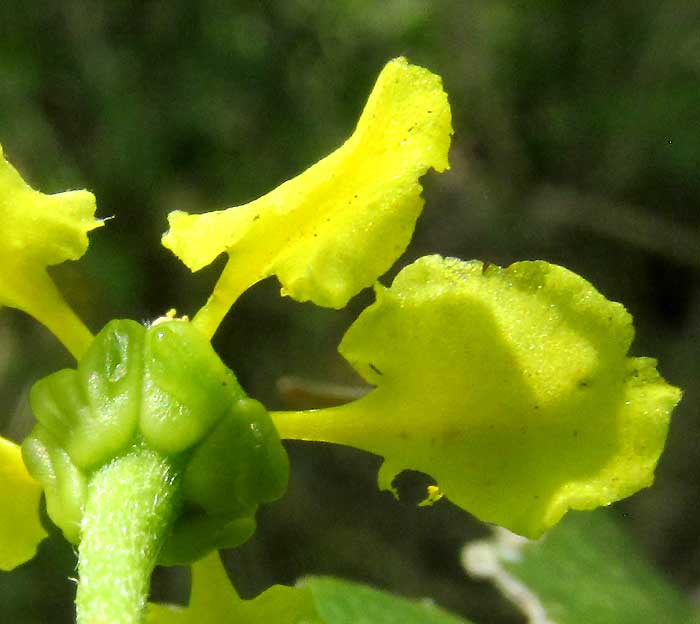Excerpts from Jim Conrad's
Naturalist Newsletter
from the July 23, 2017 Newsletter issued from Rancho Regenesis in the woods ±4kms west of Ek Balam Ruins; elevation ~40m (~130 ft), N20.876°, W88.170°; north-central Yucatán, MÉXICO
SIP-CHE', MEDICINE FOR BAD WIND
At the garden's edge, in the woods, a Dogwood-size tree very prettily has been bearing pea-sized, brightly red fruits among it dense, dark-green leaves, precisely as you can see below:
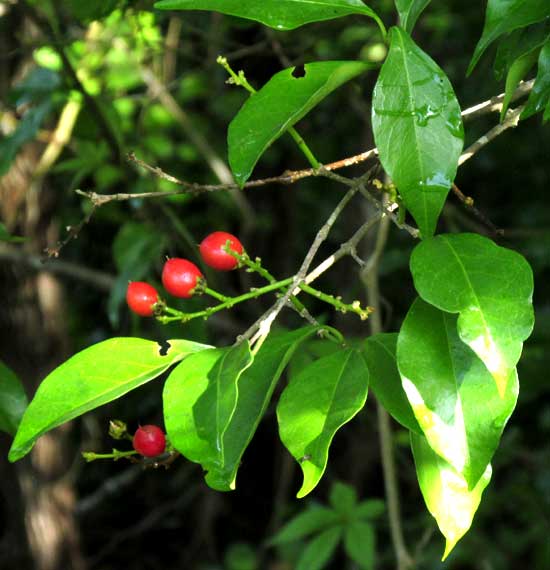
The fruits are slightly asymmetrical, with their pointy tops slightly off-center, as shown below:
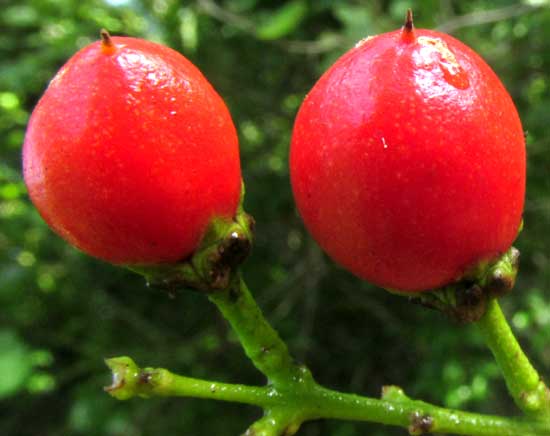
Breaking open a fruit, you find a few hard seeds taking up most of the space, shown below:
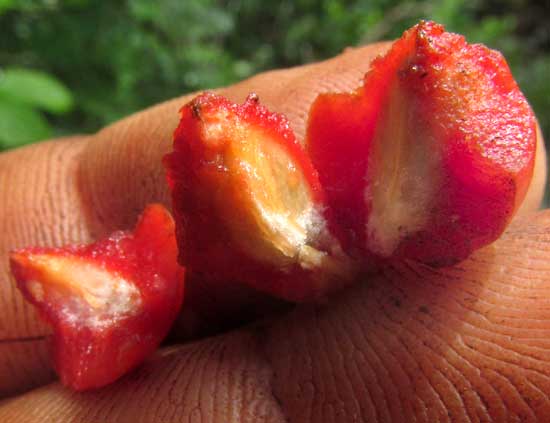
If you look at the calyx's sepals beneath the fruits you see a field mark shouting out that the little tree is a member of the big, mostly tropical-American Malpighia Family, the Malpighiaceae, as you can confirm below:
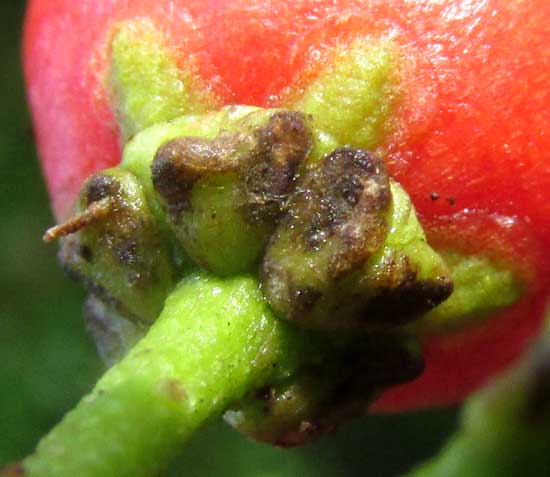
The diagnostic field mark for flowers and fruits of the Malpighia Family is that each sepal normally bears two conspicuous glands, and those brownish, warty thing in the picture are those glands.
This pretty tree, without a decent English name, is very well known among the Maya, who call it Sip-Che'. It's BUNCHOSIA GLANDULOSA. The Maya have a high regard for it because it's famous for providing protection against "evil wind," or mal viento, which the Maya worry about constantly, even the more educated ones. Back in 2008 in Sabacché, Yucatán, my friend Doña Martha told me -- as recorded in the August, 18, 2008 Newsletter -- that...
Back at Hacienda Chichen the Maya shaman regularly sent workers into the forest to retrieve branches of Sip-Che' for use in cleansing rituals. When I asked my Maya friend Gonzalo here at the rancho if he knew about Sip-Che', at first he said he didn't, but then he asked me if I might be talking about Sipi-Che', used against mal viento. That shows how the Maya language shifts a little as you travel from place to place, as well as the fact that Sip-Che' is the cure for bad winds. Gonzalo told me this story:
"A while back a cat here at the rancho began acting funny, could hardly take a few steps without falling to the side, as if it were drunk or suffering from vertigo. We felt that this was caused by mal viento, because animals can get it, too. We agreed that a Sip-Che' cleansing ritual was needed. We knew where to find Sip-Che' trees, but we didn't know the ritual words used during cleansings. Juan decided that the situation was bad enough to try it without the chanting, so he went into the forest, came back with some branches of Sip-Che', and shook the branches up and down the cat's body just like they do when people are cleansed."
"And before long the cat got up and walked away, healed," Gonzalo concluded.
Despite Sip-Che''s fame for treating evil wind, no studies confirm that it has medicinal value in terms of Western healing.
Issued May 18 from Tepakán, Yucatán, MÉXICO
SIPCHÉ FLOWERS
All through the rancho's regenerating thorn forest, nowadays Sipché is in full flower, as seen below:
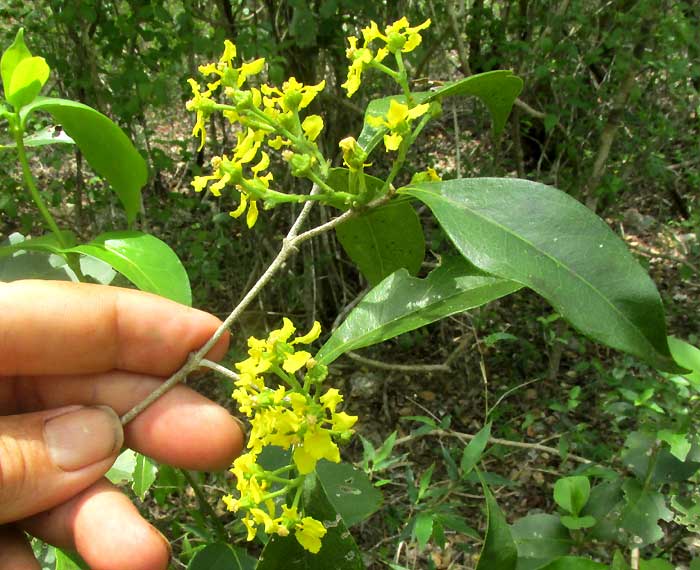
Glands on the calyx below the petals are very conspicuous, shown below:
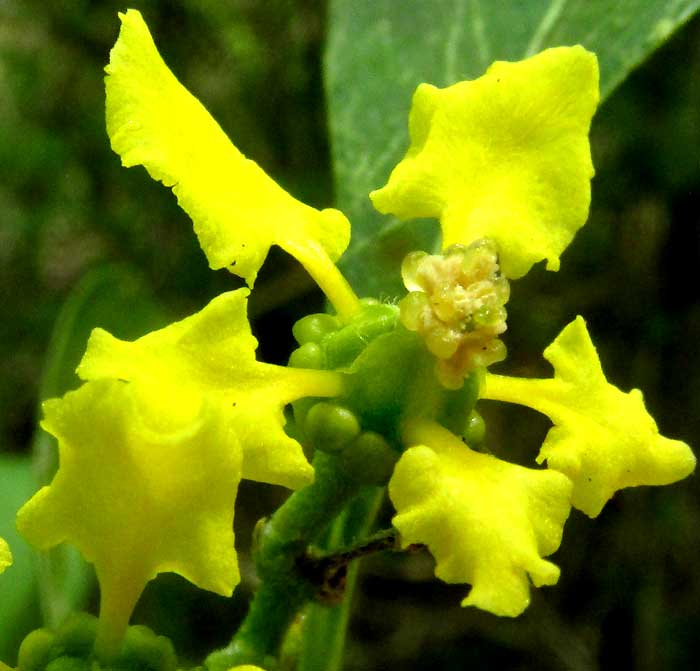
Below, the glands are shown from below:
